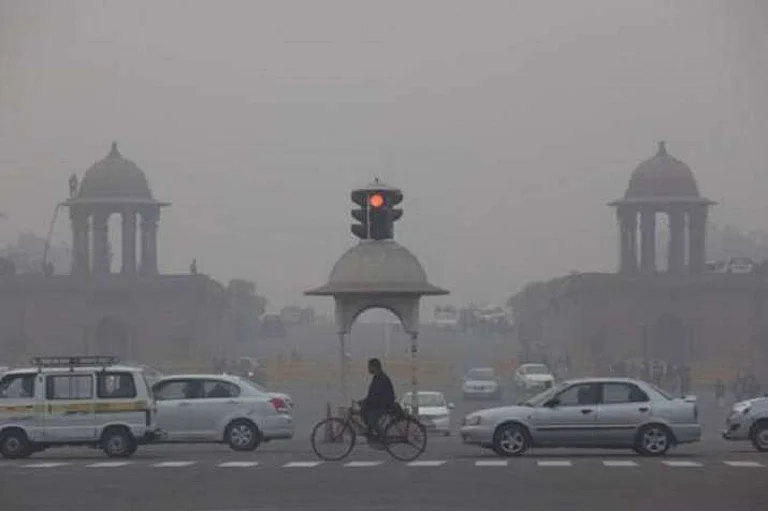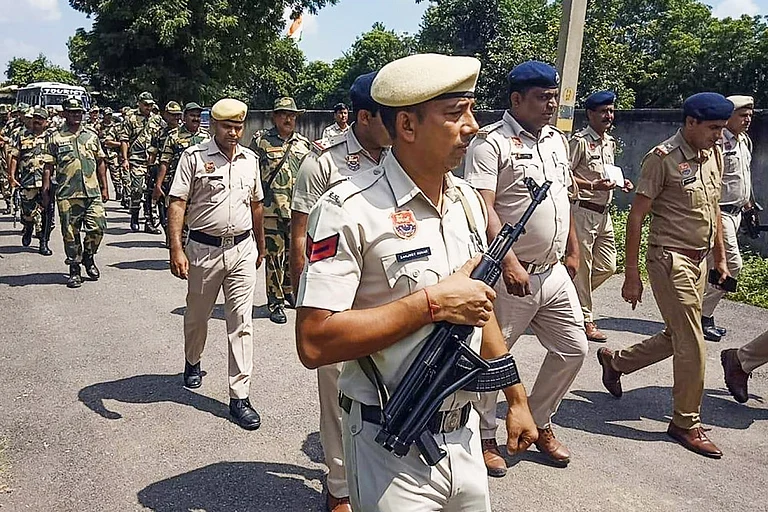With blazing winds of more than 120 km/hour, the Cyclone Biparjoy entered the state of Gujarat on the evening of June 15 around 6:30 pm. Though the total destruction of Biparjoy has not been scaled, there have been reports of the wrecking of many coastal settlements and electricity infrastructure, especially in the coastal areas of Gujarat. The Indian Express reports the death of two persons aside from a series of destruction of public and private infrastructure on account of the turbulent winds.
The warnings of an imminent cyclonic disturbance was notified by the Indian Meteorological Department (IMD) from as early as the June 1 while the organization had been constantly monitoring the low pressure depression zone in the Arabian Sea. In a few days time, the winds picked up speed and intensified to give rise to a cyclone designated as Biparjoy, which literally translates to ‘calamity’ or ‘disaster’ in the Bengali language. Classified under the ‘Very Severe Cyclonic Storm’ category by the IMD, Biparjoy’s acceleration on its north-west trajectory has seen the turbulent winds reach speeds beyond 140 km/h causing significant weather disturbances across the coastal regions of Karnataka, Goa, Maharashrta and Gujarat in India since its forewarning by the IMD. The heavy downpours have also lashed out to as far as Rajasthan triggering considerable disruption to traffic and rail services.
There has been substantial pre-emptive groundwork and quick responses by the state and the Central governments to avoid as many human and animal casualties and infrastructure destruction ahead of Biparjoy’s landfall. The mitigation initiatives have included the closing of beaches along with the evacuation of the coastal settlements, especially in Gujarat, aside from suspending oil rig operations and fishing activities in the cyclone-affected zones. There have also been the setting up of many relief camps in addition to the suspension of schools and train services in the Biparjoy-hit regions. Multiple teams of National and State Disaster Response Forces have also been deployed with the Indian Army on standby to provide relief and support against the incoming tempest.
Sensationalism and gimmickry: Media’s parody of the disaster
The ravishing winds of the cyclone have perpetually been accompanied by another squall. It is that of journalists of the various national media houses who are indulging in an exaggerated and a comical manner of reporting a rather severe disaster that has impacted the lives of many people. Few standouts among such parodies is a TV channel's anchor who can be seen holding a bright red umbrella and wobbling around to a background visual of a hurricane that had actually hit Florida. One cannot also miss the dramatic reporting of another TV news anchor in a VFX helicopter conducting virtual flybys over the cyclone devastated coasts of the country.
The nation, of late, has been witnessing such dramatic news reporting from its different media houses. From news anchors dressed up in military uniform and holding a toy gun while reporting a surgical strike to astronauts on the moon while describing the ISRO’s Vikram lander, these outlandish styles of reporting have ushered a hyper-dramatic and sensational method of storytelling that has worked in favour of these broadcasting establishments.
Such forms of news reporting raise serious questions towards ethical journalism where the very purpose of communicating hard facts to a wider national audience is lost and gets reduced to an attention-seeking performance that is good for their business. This hyper-sensationalism that relies on parody, acting, special effects and often misleading visuals have the tendency to obscure as well as subdue the substantive information that actually constitutes the foundations of such real-life correspondences. These reports eventually become less news-like and more flashy orchestrated entertainment. In such a manner of information dissemination, the final broadcasts often have strong apathetic overtones to the actual tribulations in the field. These gimmicky hyperboles often possess the power to supersede the actual empirical facts while simultaneously metamorphosing the news anchors into celebrity mascots who themselves appear to be the provenances of news.
The TV news presentation of Biparjoy is just an instance of the larger pathology ailing the news media in India. Most of the news presentations are generally characterised by a potent concoction of sensationalism and gimmickry. Sensationalism involves deliberate manipulation and exaggeration of news stories to create shock waves or elicit strong emotional reactions from the viewers. Gimmickry, on the other hand, entails attention grabbing techniques and tactics which prioritize entertainment over substantive news reporting.
Aside from these elements, contemporary television news presentations are characterized by a deeper pathology that is rooted in the pressures of commercial interests, cutthroat competition, accumulation of television rating points (TRP) and the need to attract viewers. This pathology leads to the distortion of facts and loss of objectivity aside from perpetuating misinformation and polarising narratives. Moreover, it fosters a culture of superficiality and entertainment-driven news consumption, diminishing the quality of journalism and hindering critical engagement with important issues. Most significantly, this erosion of trust in media undermines the important role of journalism as a reliable source of information and consequently distorts the democratic process by creating a confused and misinformed citizenry.
Examining the state of Indian TV news
Indian television news journalism has witnessed a disturbing trend where the level of absurdity has surpassed the mere concept of ‘infotainment’, which is a combination of information and entertainment. This trend reflects a complete disregard for journalistic principles and this indifference has now become normalised in Indian television news. Practices such as spreading fake news, conducting media trials, promoting hate propaganda and presenting polarising news content are all justified so long as they attract viewership.
The problematic state of TV news journalism in India can be better understood by examining the concept of ‘bullshit’ as explored by the philosopher Harry Frankfurt in his book ‘On Bullshit’.
Frankfurt differentiates between lying and bullshitting, arguing that while a liar intentionally distorts the truth, a bullshitter is more focused on advancing an image or an agenda rather than prioritizing truthfulness. Bullshit, in this context, does not necessarily entail falsehoods but lacks any genuine connection to the truth. The bullshitter’s disregard for the truth is one of Frankfurt’s main assertions. Bullshitters are more concerned with influencing others' impressions and opinions than they are with the truth, unlike liars who are aware of the truth and purposefully distort it. Bullshitters utilise language as a tool for manipulation and persuasion, frequently using unclear, overstated, or vague comments to make an impression without offering any substantive information.
Contemporary television news presentation is a fertile ground for bullshitting as it thrives on getting people’s attention and stirring up feelings. This frequently manifests as sensationalism, the use of click-bait headlines, or provocative images and news presentation. No matter how accurate or in-depth the content is, the sole aim is to draw viewers or readers. Such actions skew the facts, place entertainment value ahead of factual reporting, and make it more difficult for the audience to evaluate the information that they are given.
Another aspect which needs attention is the absence of rigorous fact-checking and accountability in news media that frequently fosters the growth of bullshit. Information can travel quickly without being properly verified in today’s era of quick news cycles and social media. As a result, false information, rumours, or baseless allegations may propagate. The spread of bullshit in the public arena is facilitated by the failure of the media outlets to independently check the veracity of the material that they present.
The coverage of the cyclone Biparjoy in the news has exemplified the larger problem of rampant ‘bullshitting’ that has become normalized in Indian television news. Sensationalism, gimmickry, narrative manipulation, and a lack of fact-checking and accountability are symptoms of deep-rooted issues plaguing the Indian news media. When media sources are constantly seen spreading false information for the sake of ratings and promoting certain agendas, it leads to the erosion of public trust in the entire media ecosystem. As a result, people find it increasingly difficult to identify reliable sources of information and engage in meaningful public discourse. This loss of trust in the news media has far-reaching societal repercussions, which we are already witnessing.
(Views expressed are personal)

























